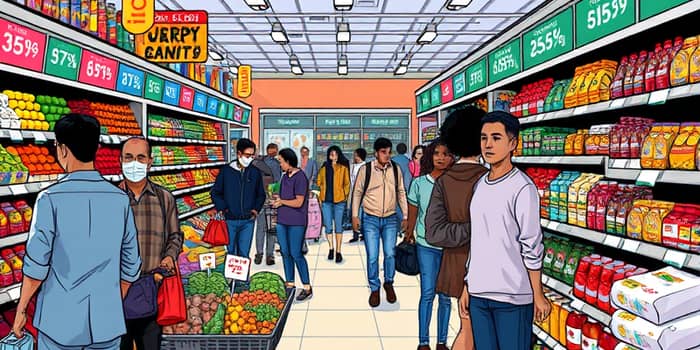
As food prices continue to rise in 2025, grocery retailers face a critical turning point. Consumers are adapting their shopping habits, and retailers must evolve to meet shifting demands. This article delves into the data, explores changing behaviors, and offers practical strategies for stakeholders navigating an era of unprecedented price sensitivity.
Recent data reveal that overall food prices in the US climbed by 2.9% year-over-year in May 2025. Grocery prices ("food at home") were up 2.2%, while restaurant prices ("food away from home") rose 3.9%. Globally, inflation has eased from the peaks of 2022–2023 thanks to falling energy costs, but many low-income nations still confront rates above 5%.
Key commodity trends highlight the uneven nature of this inflationary cycle.
Volatility persists at the category level. Egg prices fell 2.7% in May after a sharp drop in April but remain 41.5% higher than last year. Beef and veal ticked down 0.1% month-over-month yet are still 8.6% above year-ago levels. Even coffee, a staple for many shoppers, is 11.5% more expensive than a year ago.
Inflation is reshaping where and how consumers buy food. In North America, grocery sector growth in 2025 is forecast at just 1% overall, while e-commerce grocery sales are set to rise by 5%. Food service outlets—restaurants and takeout—anticipate growth of 2.7% this year.
Spending is migrating away from traditional supermarkets toward value-oriented channels and convenience-driven formats. Warehouse clubs, discount stores, and online delivery services are capturing an increasing share of wallet.
Inflation has prompted nearly 88% of Americans to alter their grocery shopping habits, up from 85% in 2022. Coping strategies include:
Concerns about affordability remain high: 61% of shoppers worry about affording groceries, rising to 74% among those earning less than $30,000 annually. Dining-out behavior has shifted as well, with 59% eating out less and 24% hunting coupons and deals. Tipping has declined, with 29% of consumers reporting lower gratuities.
In this environment, maintain trust and transparency has become a vital mantra for retailers. Shoppers across all generations express anxiety over shrinkflation, unpredictable portion sizes, and opaque pricing practices.
To meet these concerns, successful grocers are:
Premium and indulgent products still hold appeal for younger shoppers who prioritize health and sustainability. At the same time, demand for convenience remains robust, driving innovation in click-and-collect, drive-through markets, and ghost kitchens.
Looking ahead, food inflation is expected to revert closer to long-term historical averages, but underlying volatility in categories like eggs, beef, and coffee will persist. Retailers must invest in supply-chain resilience and cost management while deepening digital transformation efforts.
Data analytics and real-time inventory management can help mitigate disruptions and optimize pricing strategies. Embracing omnichannel approaches—integrating in-store experiences with online and mobile platforms—will be key to retaining and attracting budget-savvy shoppers.
In the face of prolonged economic uncertainty, grocery retailers that balance value, transparency, and innovation will be best positioned to thrive. By understanding consumer adaptations and deploying targeted strategies, the industry can navigate the complex terrain of 2025’s food inflation landscape.
References













